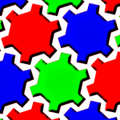It is proposed that this article be deleted because of the following concern:
If you can address this concern by improving, copyediting, sourcing, renaming, or merging the page, please edit this page and do so. You may remove this message if you improve the article or otherwise object to deletion for any reason. Although not required, you are encouraged to explain why you object to the deletion, either in your edit summary or on the talk page. If this template is removed, do not replace it . The article may be deleted if this message remains in place for seven days, i.e., after 04:12, 9 April 2025 (UTC). Find sources: "VisualAp" – news · newspapers · books · scholar · JSTOR |
Another editor has reviewed this page's proposed deletion , endorses the proposal to delete, and adds: If you remove the {{proposed deletion/dated}} tag above, please also remove this {{Proposed deletion endorsed}} tag. |
The topic of this article may not meet Wikipedia's notability guidelines for products and services .(February 2012) |
This article needs additional citations for verification .(February 2012) |
 | |
 VisualAp 1.2 | |
| Developer(s) | The VisualAp Team |
|---|---|
| Initial release | January 2008 |
| Written in | Java |
| Operating system | Cross-platform |
| Type | Visual framework |
| License | GNU General Public License |
| Website | VisualAp.sourceforge.net |
VisualAp is a visual framework for building applications and emulate systems. VisualAp is cross-platform as it is a 100% Java application. [1]
This application is able to perform audio processing, image processing, text and other process-driven emulation. VisualAp provides a visual framework based on lightweight visual components (proclets) that implements specific tasks.
Users can extend the capabilities of VisualAp via user-written proclets. Custom analysis and processing proclets can be developed using Eclipse.